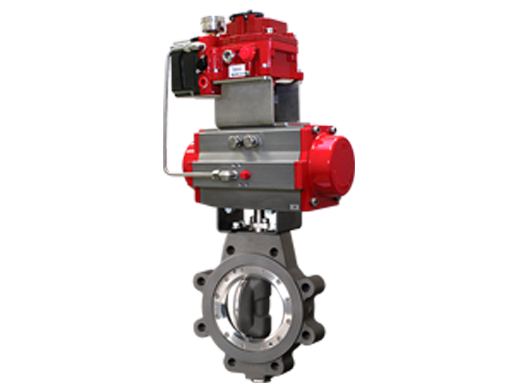Essential Factors to Take Into Consideration When Picking Control Valves
Essential Factors to Take Into Consideration When Picking Control Valves
Blog Article

Maximize Power Savings and Comfort With Advanced Building Automation Controls
In the realm of modern style and facility monitoring, the assimilation of advanced building automation regulates stands as a crucial improvement. By utilizing the power of automation, structures can adjust, respond, and progress in ways that were when unimaginable.
Energy Performance Advantages
Power efficiency benefits can substantially minimize power usage and functional expenses in buildings. Energy-efficient systems, such as advanced structure automation controls, can maximize the usage of sources like lights, air conditioning, and home heating, leading to lower energy costs over time.
In addition, improved energy performance can extend the lifespan of structure tools and systems. By operating more successfully, heating and cooling systems, lighting fixtures, and other structure elements experience less damage, leading to reduced upkeep and replacement expenses. Additionally, energy-efficient structures usually regulate greater residential property values and rental prices, supplying long-term financial advantages to owners.
Moreover, power effectiveness can improve occupant convenience and performance. Effectively managed interior atmospheres with optimal lights and thermal problems create a more enjoyable and helpful work area, causing improved worker fulfillment and performance. In general, the power effectiveness advantages associated with innovative structure automation controls are multifaceted, including cost savings, ecological stewardship, and owner health.
Enhanced Convenience Control
Enhancing comfort control in building environments needs an advanced assimilation of advanced automation systems for optimal occupant well-being. By utilizing advanced building automation controls, centers can customize the interior setting to fulfill the details needs and choices of owners. These systems make it possible for specific law of air flow, temperature level, and illumination, producing a comfortable and efficient atmosphere. Occupant complete satisfaction and productivity are closely linked to thermal convenience, making it important to have systems in position that can adjust to transforming conditions in real-time.
Boosted convenience control surpasses standard temperature adjustments. It consists of attributes such as individualized settings, tenancy sensing units, and all-natural light application to develop a responsive and vibrant atmosphere. By integrating these sophisticated controls, structures can not only improve comfort but likewise enhance energy effectiveness by enhancing system procedures based upon real occupancy and usage patterns. Inevitably, focusing on resident convenience through advanced automation systems leads to an extra delightful and healthier interior environment.
Operational Effectiveness Improvements

Additionally, the application of real-time surveillance and analytics tools enables structure operators to recognize power ineffectiveness more and operational abnormalities quickly. By continually checking energy use patterns and system performance metrics, adjustments can be made in real-time to maximize power consumption and ensure peak functional effectiveness. control valves. Furthermore, incorporating need action strategies into structure automation controls can even more improve functional performance by dynamically adjusting power usage based on grid problems and pricing signals
Indoor Environment Optimization
Reliable interior climate optimization is a fundamental facet of structure automation controls, making sure occupants' convenience and well-being while making the most of energy cost savings. By making use of sophisticated sensing units and controls, building automation systems can continually change and keep an eye on temperature level, moisture degrees, air high quality, and ventilation to develop an ideal interior setting. Preserving comfy and regular conditions not only boosts occupant satisfaction yet also increases performance and general wellness.
Indoor environment optimization also plays a vital role in energy effectiveness. By fine-tuning home heating, cooling, and ventilation systems based upon real-time data and occupancy patterns, building automation controls can significantly decrease power consumption - control valves. Implementing techniques such as demand-controlled air flow and thermal zoning can assist lessen energy waste while making certain that each location of the building receives the essential conditioning.

Lasting Atmosphere Production
Building automation manages not only optimize interior environment conditions for energy performance and resident convenience however likewise lay the foundation for developing a lasting environment click now with calculated administration of systems and sources. By incorporating advanced building automation innovations, such as sensing units, actuators, and intelligent software, centers can monitor and readjust energy usage in real-time to reduce waste and decrease their carbon impact. These systems enable anticipating upkeep, determining possible problems before they intensify and enhancing tools performance to improve long life and efficiency.
In addition, sustainable atmosphere creation prolongs beyond energy management to incorporate water preservation, waste dig this decrease, and interior air quality renovation. Structure automation controls can control water use, spot leakages, and guarantee correct garbage disposal practices, contributing to overall sustainability efforts. Additionally, by keeping an eye on and regulating ventilation and filtration systems, these innovations improve occupant health and performance while lowering power usage connected with heating and cooling operations.
Final Thought
In verdict, advanced structure automation controls offer substantial advantages in terms of energy cost savings, convenience control, operational effectiveness, interior environment optimization, and producing a sustainable environment. By implementing these controls, buildings can achieve optimum efficiency while lowering power intake and improving owner convenience. It appears that making use of sophisticated automation technology is crucial in improving structure efficiency and producing an extra sustainable future.
Energy efficiency advantages can considerably lower energy usage and operational expenses in buildings. Overall, the power efficiency advantages linked with advanced building automation controls are diverse, including expense financial savings, environmental stewardship, and resident health.
Additionally, including need reaction techniques right into structure automation controls can further boost operational efficiency by dynamically readjusting energy use based on grid problems and prices signals.
Structure automation manages not only enhance interior environment problems for power performance and owner comfort but also lay the foundation for developing a sustainable atmosphere with calculated administration of systems and sources.In verdict, advanced structure automation controls deal considerable advantages in terms of energy cost savings, convenience control, functional performance, indoor climate optimization, and producing a sustainable atmosphere.
Report this page